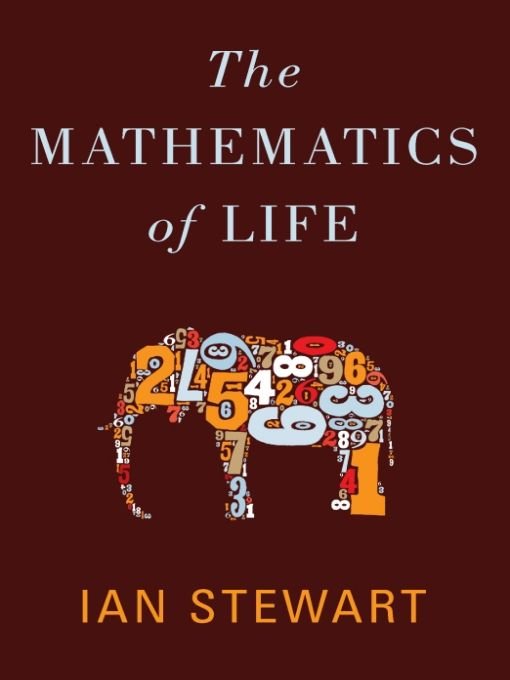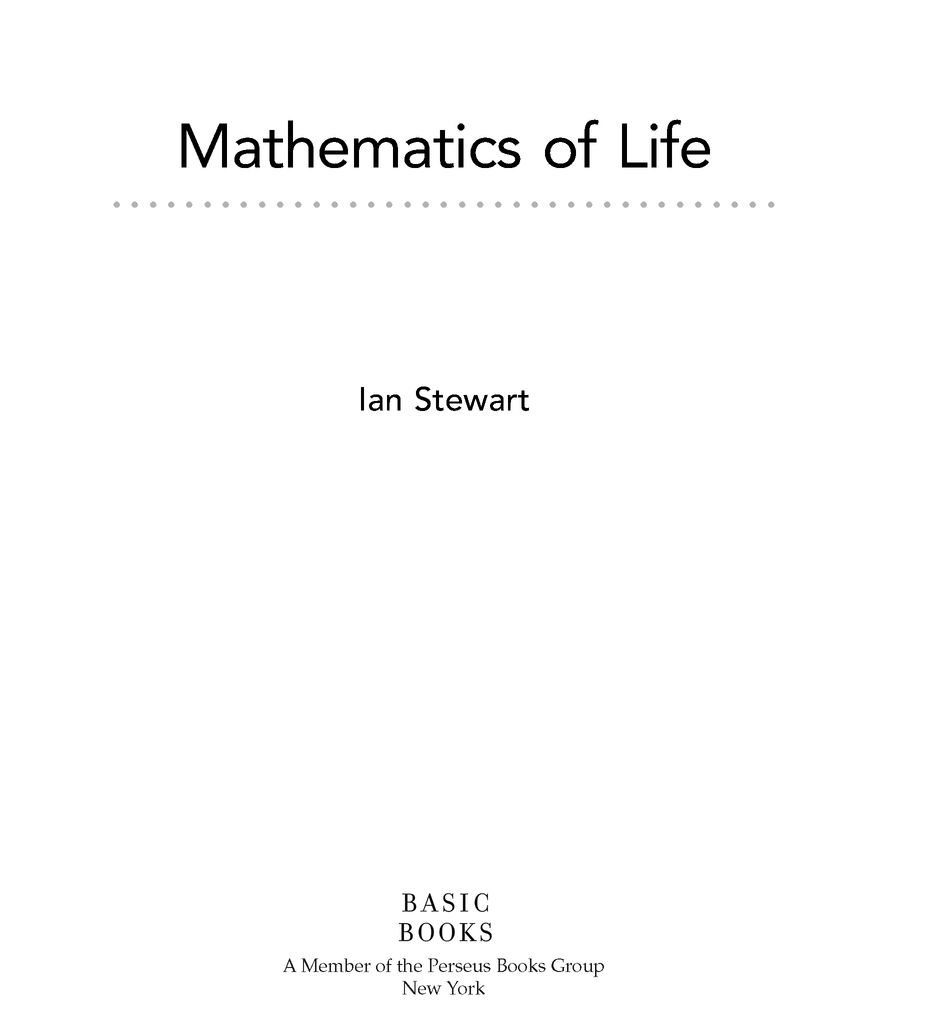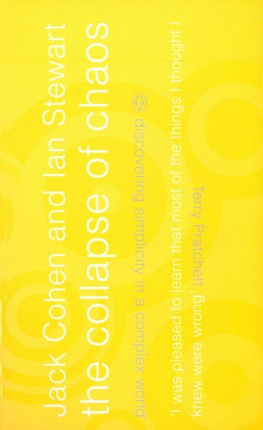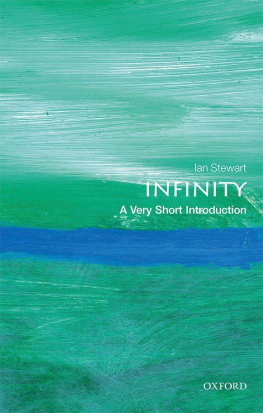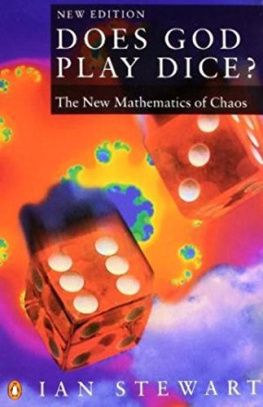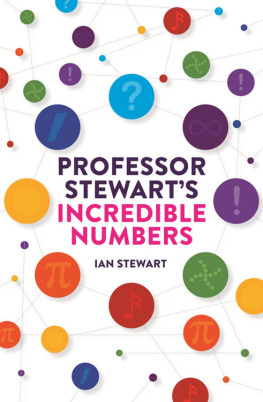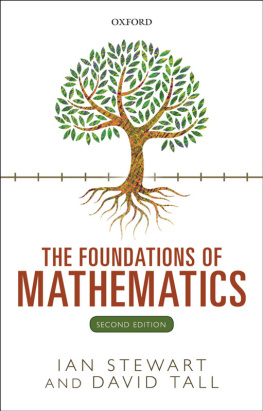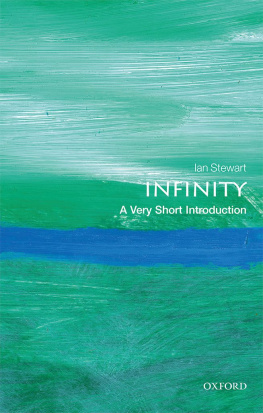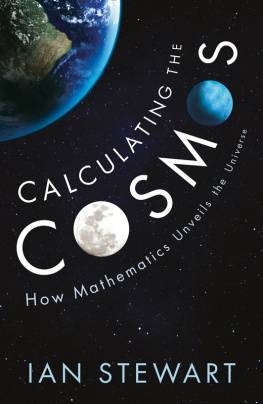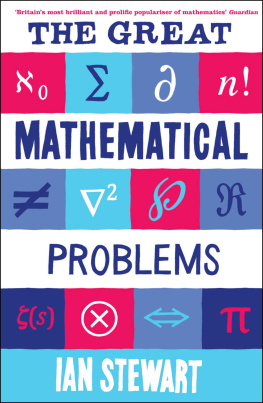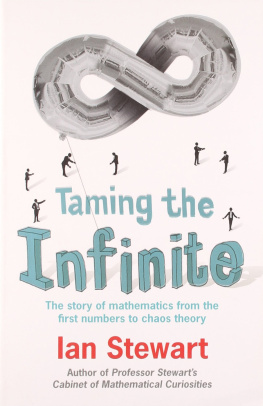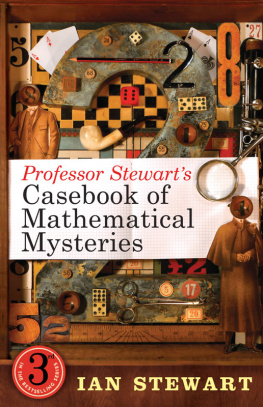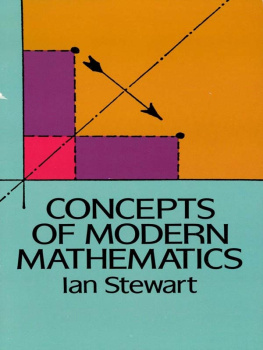Table of Contents
By the same author
Concepts of Modern Mathematics
Game, Set and Math
The Problems of Mathematics
Does God Play Dice?
Another Fine Math Youve Got Me into
Fearful Symmetry (with Martin Golubitsky)
Natures Numbers
From Here to Infinity
The Magical Maze
Lifes Other Secret
Flatterland
What Shape Is a Snowflake?
The Annotated Flatland
Math Hysteria
The Mayor of Uglyvilles Dilemma
Letters to a Young Mathematician
Why Beauty Is Truth
How to Cut a Cake
Taming the Infinite: The Story of Mathematics
Professor Stewarts Cabinet of Mathematical Curiosities
Professor Stewarts Hoard of Mathematical Treasures
Cows in the Maze
with Terry Pratchett and Jack Cohen
The Science of Discworld
The Science of Discworld II: the Globe
The Science of Discworld III: Darwins Watch
with Jack Cohen
The Collapse of Chaos
Figments of Reality
Evolving the Alien/What Does a Martian Look Like?
Wheelers (science fiction)
Heaven (science fiction)
Preface
Mathematical theory and practice have always gone hand in hand, from the time primitive humans scratched marks on bones to record the phases of the Moon to the current search for the Higgs boson using the Large Hadron Collider. Isaac Newtons calculus informed us about the heavens, and over the past three centuries its successors have opened up the whole of mathematical physics: heat, light, sound, fluid mechanics, and later relativity and quantum theory. Mathematical thinking has become the central paradigm of the physical sciences.
Until very recently, the life sciences were different. There, mathematics was at best a servant. It was used to perform routine calculations and to test the significance of statistical patterns in data. It didnt contribute much conceptual insight or understanding. It didnt inspire great theories or great experiments. Most of the time, it might as well not have existed.
Today, this picture is changing. Modern discoveries in biology have opened up a host of important questions, and many of them are unlikely to be answered without significant mathematical input. The variety of mathematical ideas now being used in the life sciences is enormous, and the demands of biology are stimulating the creation of entirely new mathematics, specifically aimed at living processes. Todays mathematicians and biologists are working together on some of the most difficult scientific problems that the human race has ever tackled including the nature and origin of life itself.
Biology will be the great mathematical frontier of the twenty-first century.
Mathematics of Life celebrates the rich variety of connections between mathematics and biology that already exist, from the Human Genome Project, through the structure of viruses and the organisation of the cell, to the form and behaviour of entire organisms and their interaction in the global ecosystem. It will also show how mathematics can shed new light on difficult issues concerning evolution, where many important processes take too long to observe, or happened hundreds of millions of years ago and have left only cryptic traces.
Initially, biology was about plants and animals. Then it was about cells. Now it is mostly about complex molecules. To reflect these changes in scientific thinking about the enigma of life, the book starts from the everyday human level, and follows the historical path that led biologists to focus ever more sharply on the microscopic structure of living creatures, culminating in DNA, the molecule of life.
Most of the material discussed in the first third of the book is therefore about biology. However, mathematics makes an early appearance, tracing questions about the geometry of plants from Victorian times to the present day, to illustrate how new mathematical ideas have been motivated by biology. Once the biological background has been established, mathematics comes to centre stage as we build up from the atomic scale, back to the level with which we feel most comfortable, the one on which we all live. The world of grass, trees, sheep, cows, cats, dogs... and people.
The mathematics involved is far-ranging: probability, dynamics, chaos theory, symmetry, networks, mechanics, elasticity even knot theory. Most of the applications discussed here are to mainstream mathematical biology: the structure and function of the complex molecules that co-ordinate the complex processes of life, the shapes of viruses, the evolutionary games that led to the huge diversity of life on this planet and are still happening today, the workings of the nervous system and the brain, the dynamics of ecosystems. Ive also included chapters on the nature of life and the possible existence of alien life forms.
The interaction between mathematics and biology is one of the hottest areas of science. It has already come a long way in a very short time. Only the future will show just how far it can go. But one thing I guarantee: its going to be an exciting ride.
Ian Stewart
Coventry, September 2010
Mathematics and Biology
Biology used to be about plants, animals and insects, but five great revolutions have changed the way scientists think about life.
A sixth is on its way.
The first five revolutions were the invention of the microscope, the systematic classification of the planets living creatures, the theory of evolution, the discovery of the gene, and the discovery of the structure of DNA. Lets look at them in turn, before moving on to my sixth, more contentious, revolution.
The Microscope
The first biological revolution happened 300 years ago, when the invention of the microscope opened our eyes to the astonishing complexity of life on the smallest scales. More precisely, it opened up the complexity of life to observation by our eyes, by providing a new instrument to augment our unaided senses.
The invention of the microscope led to the discovery that individual organisms have an amazing internal complexity. One of the first big surprises was that living creatures are made from cells tiny bags of chemicals enclosed in a membrane that lets some of the chemicals pass in or out. Some organisms consist of a single cell, but even those are surprisingly complicated, because a cell is an entire chemical system, not something simple and straightforward. Many organisms are made from a gigantic number of cells: your body contains roughly 75 trillion of them. Each cell is a tiny biological machine with its own genetic machinery which can cause it to reproduce, or die. Cells come in more than 200 types muscle cells, nerve cells, blood cells, and so on.
Cells were discovered very soon after microscopes were invented: once you can look at an organism under high magnification, you cant miss them.
Classification
The second revlution was started by Carl Linnaeus, a Swedish botanist, doctor and zoologist. In 1735, his epic work Systema Naturae appeared. Its full title in English is The system of nature through the three kingdoms of nature, according to classes, orders, genera and species, with characters, differences, synonyms, places. Linnaeus was so interested in the natural world that he decided it needed to be catalogued. All of it. The first edition of his catalogue was just 11 pages long; the 13th and last ran to 3,000 pages. Linnaeus made it clear that he was not trying to uncover some kind of hidden natural order; he was just trying to organise what was there, in a systematic and structured manner. His chosen structure was to classify natural objects in a five-stage subdivision: kingdom, class, order, genus, species. His three kingdoms were animals, plants and minerals. He founded the science of taxonomy: the classification of living creatures into related groups.

